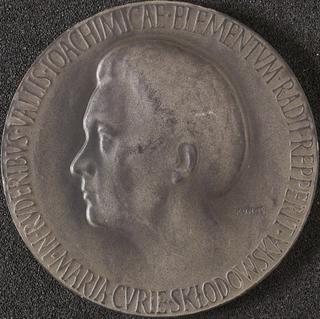
Marie Curie was a Polish physicist. She is best known for discovering the radioactive substance radium, with her husband Pierre Curie in 1888. Curie was one of the 20th century’s most remarkable scientists. She was the first to receive two Nobel Prizes.
Curie was born Maria Sklodowska and grew up in Warsaw, Poland. In 1891, Curie studied physics and mathematics at the Sorbonne in Paris. She also changed her name to Marie. At university, Marie met Pierre Curie, a professor in the School of Physics. A year later they married. They coined the term ‘radioactivity’ and researched radioactive substances, and in 1898 they identified two new radioactive elements: radium and polonium. In 1903, Marie and Pierre were awarded the Nobel Prize in Physics for their discoveries.
Pierre died in 1906. Marie replaced her husband as professor and continued her research. She investigated radium as a cancer treatment. In 1911 she received a second Nobel Prize (in Chemistry), in recognition of her work on radioactivity.
During the First World War, Curie pioneered using mobile X‑ray vehicles to treat wounded soldiers, which became known as petites Curies (‘little Curies’).
Curie worked with radioactive materials throughout her career, at a time when the damaging effects of radiation were not known. In 1934 she died from a condition caused by her exposure to radioactive substances.

